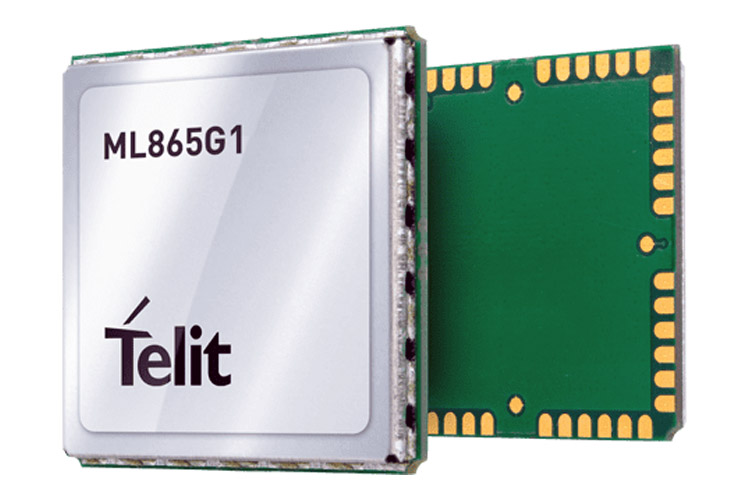Telit has made a new addition to its well-known portfolio of low power NB-IoT and LTE-M modules. The OneEdge enabled ML865G1-WW is based on Qualcomm 9205 LTE Modem, 3GPP Release 14 compliant with global bands, optimized in cost, size, and power. The ML865G1-WW LTE UE Cat M1/ NB2 module enables increased power saving for IoT applications using Power Saving Mode (PSM) and extended Discontinuous Reception (eDRX), allowing devices to wake up periodically, thereby delivering only the smallest amounts of data necessary before returning to sleep mode.
The module provides Telit customers with 2G and 3G deployments, based on the Telit xL865 form factor, a seamless way to upgrade their applications and extend product life-cycles using the latest LTE technologies. The broad frequency band support of ML865G1-WW makes it apt for global deployments. For devices that are deployed globally or across multiple countries, 2G fallback ensures connectivity where LTE-M and NB-IoT networks are not yet deployed nationally. It is ideal for enabling the quick, global implementation of LTE technology where low cost and low power are more relevant than high speed. The ML865G1-WW is pin-to-pin and software that is compatible with Telit 2G and 3G modules of the xL865 Family. This enables easy and quick transition of designs to the newer and longer lifecycle LTE technologies for IoT.
The ML865G1-WW supports Telit value-added services like OneEdge which is innovative module-embedded software with pre-packaged management tools that include LwM2M FOTA and device management. Additionally, it supports AppZone which is an app to the module development environment. The module takes advantage of Qualcomm 9205 LTE Modem’s high levels of hardware integration and ready-to-use cloud connectivity SDK tools, thereby helping customers save money and time-to-commercialization to build IoT products. Engineering samples are shipping with commercial availability later in 2020.











